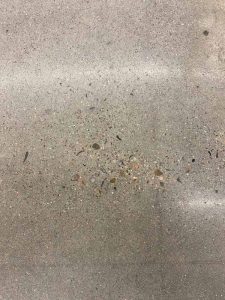
By Mallory A. Westbrook and Jon S. Belkowitz, PhD, PE
Pathogen growth is a common financial problem that has a devastating impact in grocery stores, hospitals, retail stores, as well as schools. The root cause is due to exposure to contaminated food, settlement of airborne bacteria, and pathogens from spilled/dripped human fluids.1 Common bacteria that cause these outbreaks include E. coli, Salmonella, Listeria, Staphylococcus aureus, and more.
A report from the University of Minnesota estimated Salmonella and E. coli costs the United States $3.13 billion a year.2 A separate report from the National Center for Biotechnology Information (NCBI) found the cost of a single foodborne outbreak ranged from $3968 to $1.9 million for a fast-food restaurant and up to $2.6 million for a fine dining restaurant.3 Based on recent data, one outbreak will monopolize 621 weeks or 12 years’ worth of sales for the average grocery store.4
When compared to the average profit from grocery stores, these costs are devastating. According to Food Marketing Institute, the net profit for the average location operating within the retail grocery industry is just 1.1 percent due to these outbreaks. It is imperative for stores, restaurants, schools, and restaurants to prevent these losses by minimizing pathogen growth and outbreak.
An extremely common foodborne pathogen present in produce is listeria. The medical costs associated with listeria infections run from $61.7 to $64.8 million. In addition, productivity losses were estimated to run from $125.8 to $154.4 million a year. The productivity costs associated with listeria-related chronic illness was estimated to be an additional $38 million a year.5 In total, exposure to listeria costs $232.7 million to $264.4 million annually.
Concrete floors
Flooring is a huge contributor to pathogen growth in these environments. Most restaurants, schools, stores, and hospitals utilize concrete floors, polished concrete floors, or vinyl composite tile (VCT). Concrete floors are often placed due to the durability and ease of cleaning spills. However, concrete is rarely fully cleaned and teams up with harmful pathogens.
The concrete composite acts as a hardened sponge with interconnecting pores and is extremely permeable due to this structure. Within the body of a concrete floor slab are air voids, pores, and capillaries. Even when the void structure within the concrete is discontinuous, moisture remains present within the slab and can migrate within the body of the concrete in an adsorbed or condensed state by surface diffusion.




